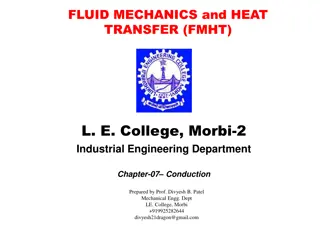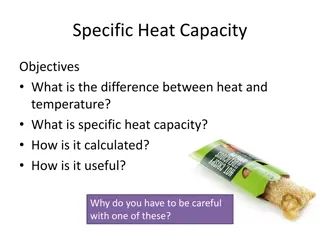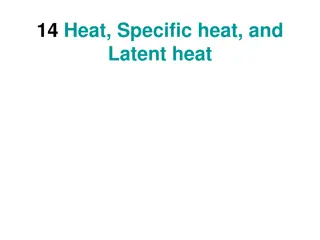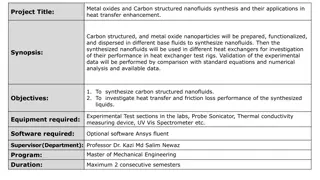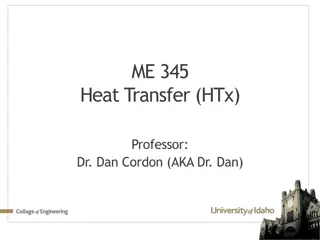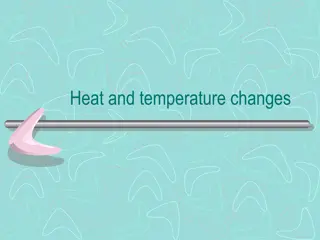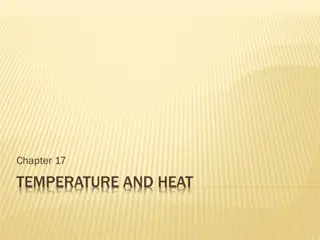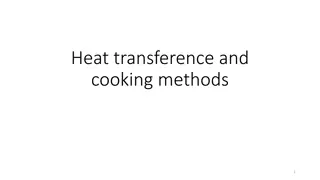Understanding Heat Transfer in Materials
Explore how heat is transferred in solids and liquids through vibrations and molecular movement. Discover the effects of temperature differences on fluid layers and observe energy transfers with layered vials. Dive into questions and experiments to deepen your understanding of heat transfer phenomena.
Download Presentation

Please find below an Image/Link to download the presentation.
The content on the website is provided AS IS for your information and personal use only. It may not be sold, licensed, or shared on other websites without obtaining consent from the author. Download presentation by click this link. If you encounter any issues during the download, it is possible that the publisher has removed the file from their server.
E N D
Presentation Transcript
Heat Transfer What do we know?
Heat in Solids In solids, the atoms or molecules are locked into position. When radiant energy is absorbed by one area in a solid, the molecules begin to vibrate more. The vibration impacts neighboring molecules, and the motion spreads. That s how heat is conducted through a solid material-by vibrational energy, one molecule to the next.
Heat in Liquids In fluids, both liquids and gases, molecules are not locked into position. They can move toward, away, from, and past one another. Heat can transfer from one place to another ina liquid or gas by conduction-molecules hitting one another-and by absorption of radiant energy.
However There is another way that energy moves in fluids. That s what we will try to observe today. Today we have a new challenge We have layered with salt water but can we layer with plain water of different temperatures?
Think Questions 1. What variable made it possible to layer the salt solutions? 2. If two solutions have different densities, which one layers on top? 3. Why do you think the hot red water layered on top of the room temperature water? 4. Why do you think the cold blue water layered under the room temperature water? 5. What happened when the layered vial sat undisturbed for 5 minutes? Why? 6. What might happen if you put a layered vial in a cup with 2 cm. of hot water? Why?
Try This a. Create the three-layer vial. b. Put 1 cm of hot water in a plastic cup. c. Place the layered vial carefully in the cup of hot water and observe.
Questions 1. What did you observe? 2. How do you explain your observations? 3. Can you explain the energy transfers that happened in order to make the blue water ascend?
Molecular Model for Water Density As heat is absorbed by water, the molecules move faster and bang into each other with greater frequency and force. This drives the molecules farther apart. When the molecules are forced farther apart, the water becomes less dense. 1. Is the hot red water denser, the same density, or less dense than the room-temperature water? 2. Why do you think the hot red water sank to the bottom?
Convection When a mass of fluid, either liquid or gas, is warmer or colder than the surrounding fluid, the mass will rise or sink in the surrounding fluid. This motion of masses or streams of fluid, due to difference in density resulting from temperature, is convection. Convection is the third way heat moves from one place to another. Convection happens only in fluids, where molecules are free to flow.





